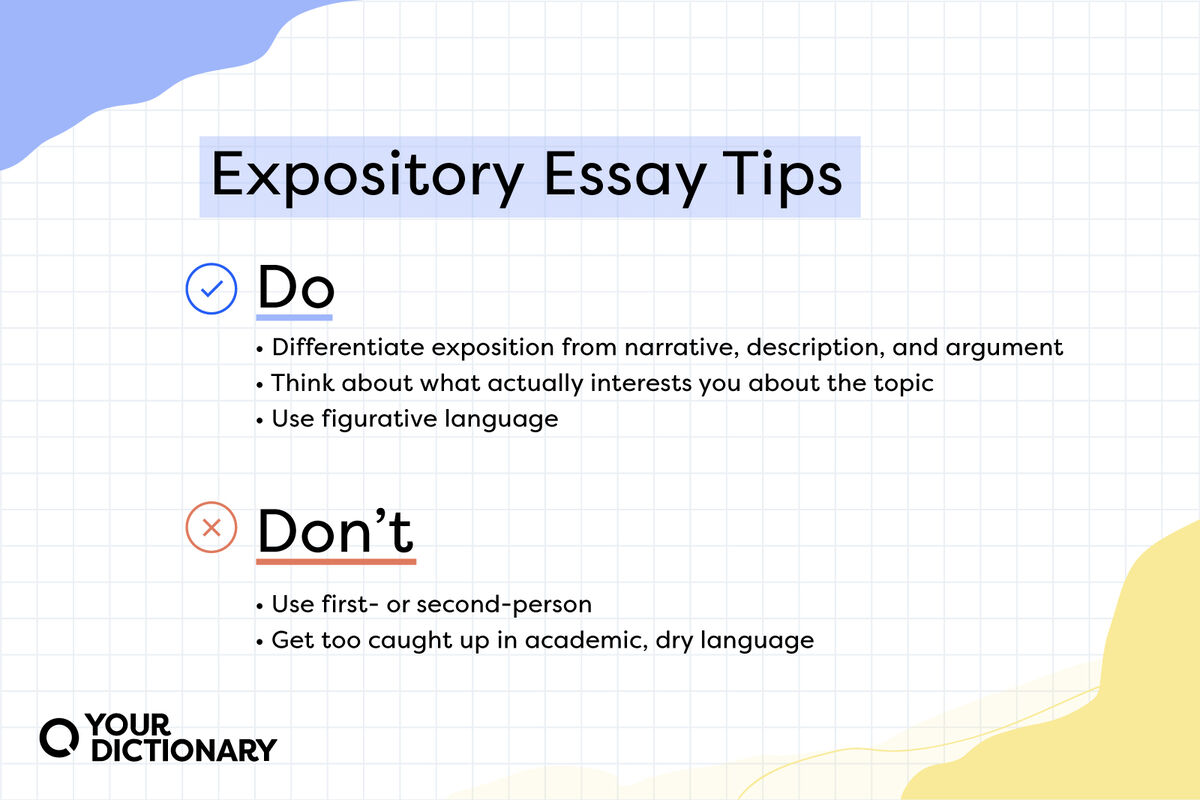
EXPOSITORY ESSAY WRITING
An expository essay is a form of writing that aims to inform, explain, or clarify a particular subject to the reader. Unlike argumentative essays, which focus on persuading the reader to adopt a particular stance, expository essays are neutral and objective, presenting information clearly without personal opinions. The purpose is to provide facts, explanations, or processes in a way that enhances the reader's understanding.
Structure of an Expository Essay
Expository essays typically follow a standard five-paragraph structure, consisting of an introduction, three body paragraphs, and a conclusion. Each section plays a distinct role in guiding the reader through the subject matter.
-
Introduction: The introduction sets the stage for the essay. It should grab the reader's attention with a compelling hook, such as an interesting fact, statistic, or thought-provoking question. After the hook, provide some background information to give context to the topic. The introduction concludes with a clear thesis statement, which summarizes the main idea or goal of the essay. This thesis serves as a roadmap, outlining what the reader can expect in the body paragraphs.
-
Body Paragraphs: Each of the three body paragraphs in an expository essay should focus on a single point or aspect of the thesis. Begin each paragraph with a topic sentence that introduces the point being discussed. Follow this with supporting evidence, examples, or explanations that further clarify the point. Use clear transitions between paragraphs to maintain the flow of the essay.
- First body paragraph: Discuss the most important or foundational aspect of the topic. This could be a definition, background information, or a key fact that sets the stage for further discussion.
- Second body paragraph: Build on the first paragraph by diving deeper into the subject. This could include more detailed examples, explanations of processes, or further analysis.
- Third body paragraph: Conclude the body section by discussing a final point that ties everything together. This paragraph often focuses on implications, outcomes, or additional details that enhance the reader's understanding of the subject.
-
Conclusion: The conclusion wraps up the essay by summarizing the main points discussed in the body paragraphs. Restate the thesis in a new way, emphasizing the importance of the subject matter without introducing new information. The conclusion should leave the reader with a sense of closure, while also reinforcing the main takeaway from the essay.
Types of Expository Essays
Expository essays can take various forms, depending on the type of information being conveyed:
-
Descriptive Essays: These essays provide detailed descriptions of a particular person, place, event, or object. The goal is to paint a vivid picture for the reader, using clear and concise language.
-
Process Essays: Often referred to as "how-to" essays, these explain the steps required to complete a task or process. Each step is laid out in logical order, ensuring that the reader can follow along easily.
-
Comparison and Contrast Essays: These essays highlight the similarities and differences between two or more subjects. This type of essay often helps readers understand the distinctions between complex topics or ideas.
-
Cause and Effect Essays: These essays explore the reasons behind an event or situation (the cause) and the resulting consequences (the effect). The writer may focus on one cause with multiple effects, or one effect with several causes.
-
Problem and Solution Essays: These essays identify a problem and propose one or more solutions. The focus is on providing a clear explanation of the problem and offering well-reasoned solutions.
Writing Tips for an Expository Essay
-
Choose a Clear and Manageable Topic: Selecting a topic that can be thoroughly explained within the constraints of the essay is crucial. Avoid choosing a topic that is too broad or too narrow. The goal is to provide enough detail to inform the reader without overwhelming them.
-
Use Credible Sources: When gathering information, rely on reputable and credible sources such as books, academic journals, and authoritative websites. The information should be accurate and up-to-date, enhancing the essay's reliability.
-
Stay Objective: Expository essays are based on factual information. Avoid including personal opinions or bias, as the focus should be on educating the reader rather than persuading them.
-
Be Clear and Concise: Clarity is key in an expository essay. The language should be straightforward, avoiding overly complex vocabulary or convoluted sentences. The reader should be able to follow your explanations without difficulty.
-
Use Transitions: Smooth transitions between paragraphs and ideas help maintain the flow of the essay. Words like "firstly," "in addition," "for example," and "consequently" guide the reader through the essay, making it easier to understand the connections between points.
-
Revise and Edit: After writing the first draft, take the time to revise and edit. Check for clarity, coherence, and consistency. Ensure that your facts are accurate and that the essay follows a logical progression.
Conclusion
In conclusion, writing an expository essay requires a clear and structured approach. By organizing the essay with an introduction, body paragraphs, and a conclusion, and by focusing on providing objective, factual information, you can effectively inform and educate your reader. Whether you're explaining a process, comparing two subjects, or exploring the causes and effects of an event, the expository essay allows you to present information in a clear, concise, and engaging way.